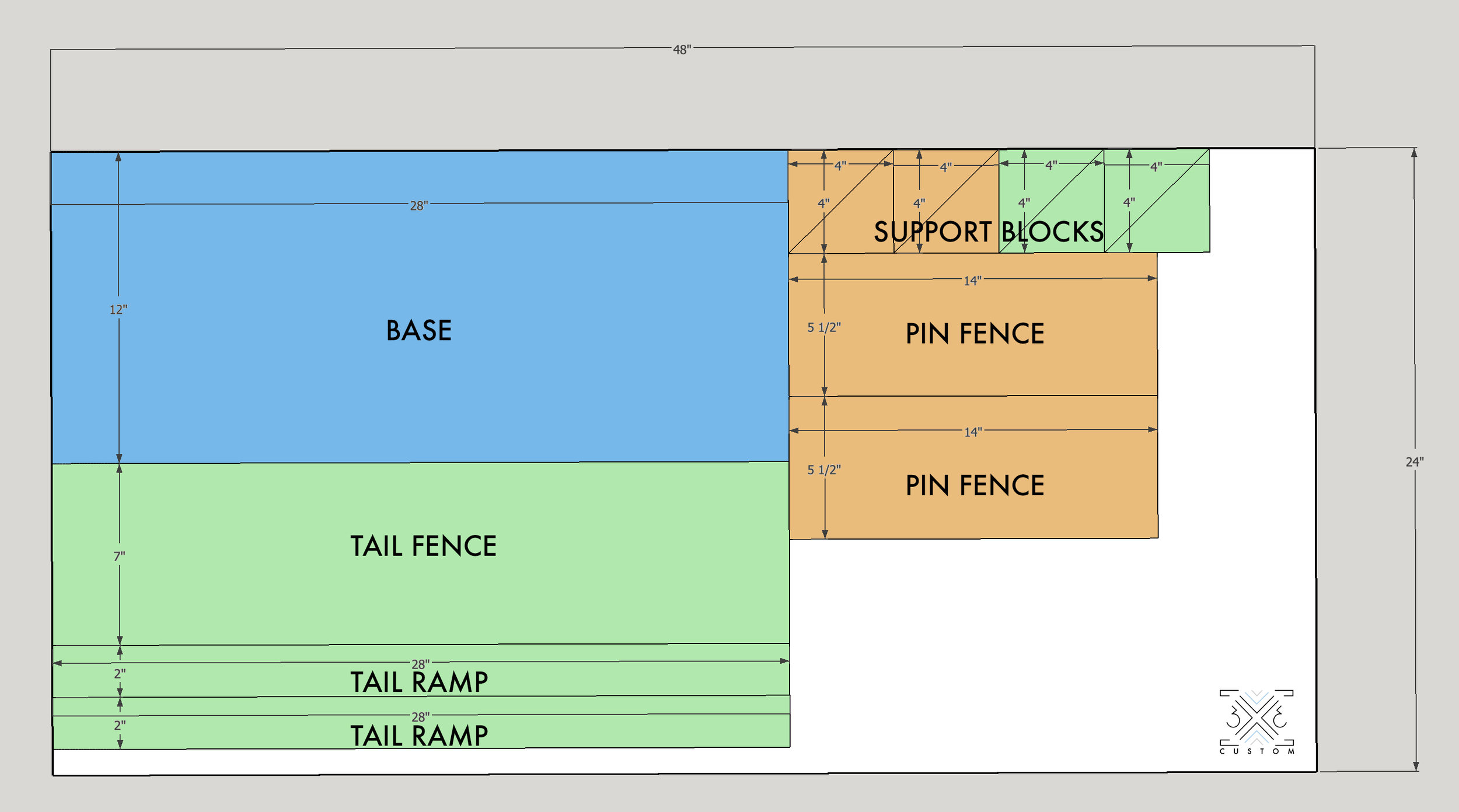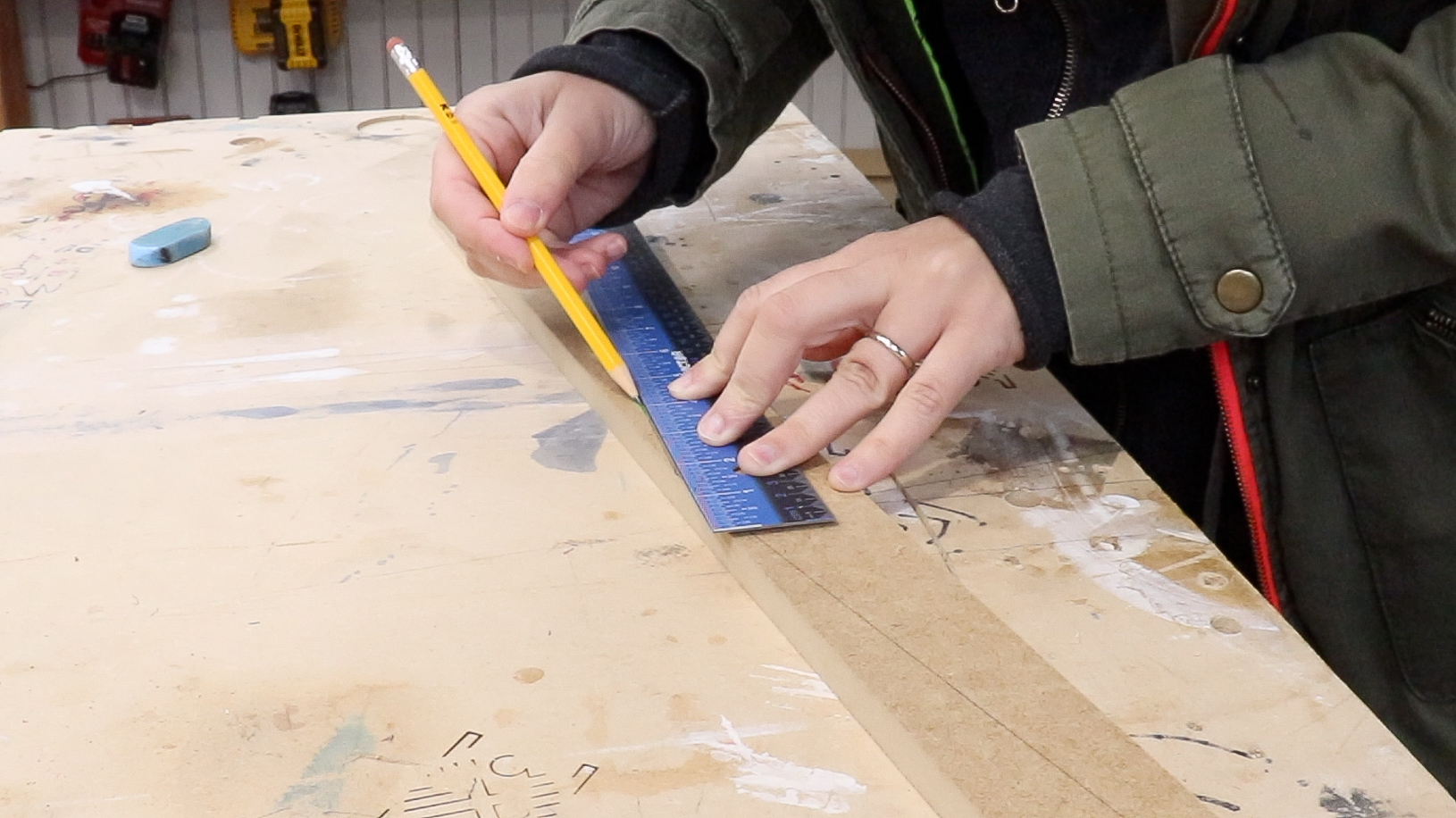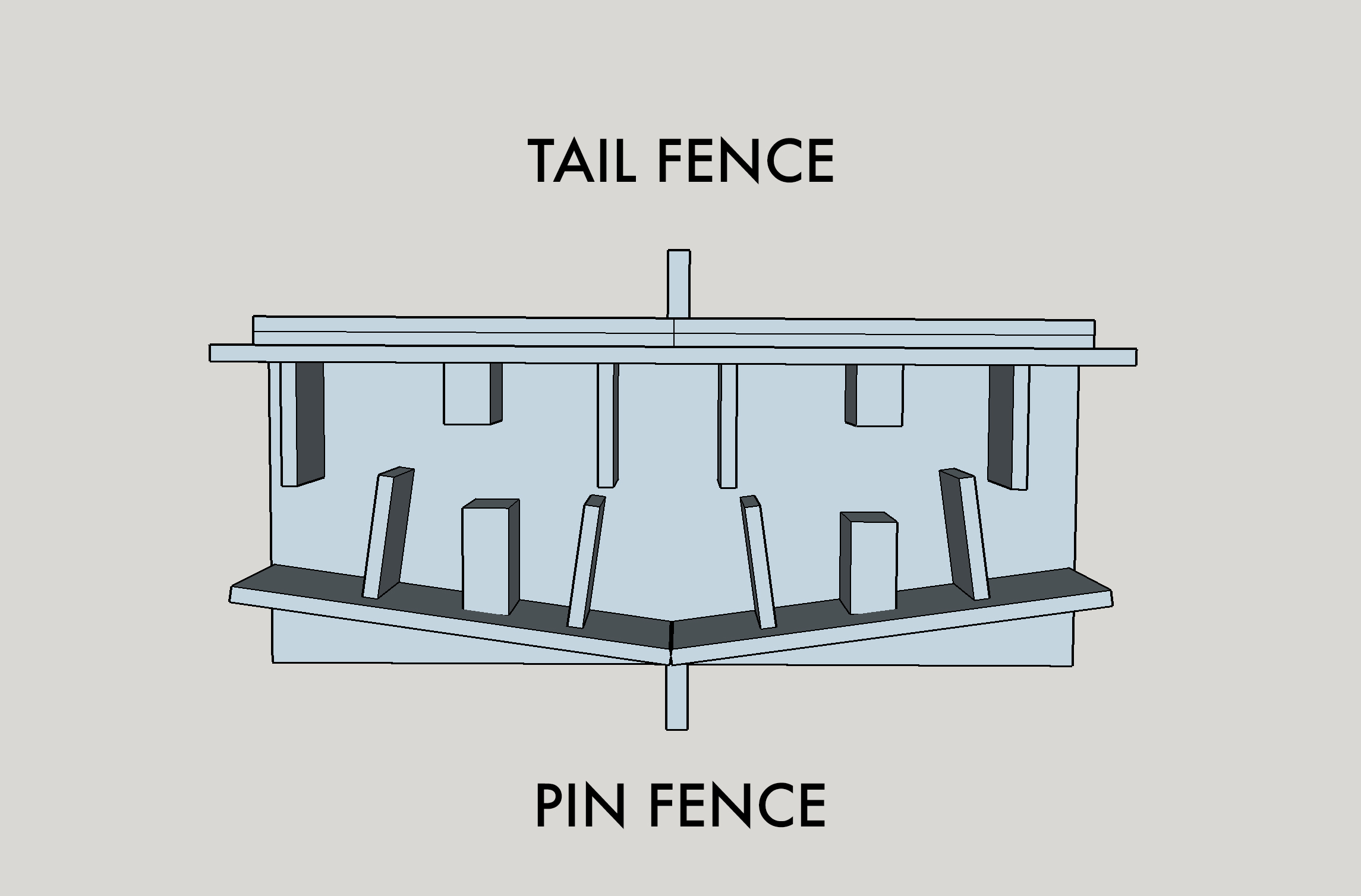Dovetail Jig for the Table Saw
I have seen a few pictures of people using a jig for the table saw to create dovetails, but I could not find any videos on anyone making this jig, so I decided to try and figure it out! I think the results are pretty cool, so check out the video below to see how I made it!
I used 1/2” MDF for most of the jig and I cut everything to size.
I made this jig into two separate components because of the job site saw that I use. There are only about 6” of table in front of my blade. So if you have a larger saw, I would recommend making this into one jig.
The cut list below has the base cut at 12” wide, if you are making this jig into two separate parts (like I did), cut the base in half at 6” wide.
Also note, you should cut the 4”x4” support blocks into triangles, so you get 8 triangles.
After cutting all the pieces to size, the first thing to determine is what angle you want your dovetails to be.
I decided to go with 8 degrees, but this part is customizable.
The 8 degree angle is really approximate, I used a 1:7 ratio to get to this angle.
If you have a piece of wood that is 7” long by 1” wide and you make a line from the lower right hand corner to the upper left hand corner the angle will be about 8 degrees.
You will determine this angle on the tail board ramp.
My pieces were cut to 28” long by 2” wide, so I marked a line in the center at 14”. This way, that ratio just gets doubled (instead of 1:7, it is now 2:14). I used a straight edge from one corner to that 14” mark to create the angle that is approximately 8 degrees.
I did that on both sides of the piece to create an obtuse triangle.
The tail ramp consists of 2 pieces of the 1/2” MDF to create a wider surface for your workpiece to rest on.
I marked out the angle on the tail ramp before gluing it up because I used some brad nails to hold it into place to prevent slippage from the clamps and I wanted to make sure I wasn’t going to cut into any brads.
After the glue dried, I used my Taper jig to cut the angles of the tail ramp.
This is the most complicated part of making this jig, but you don’t have to stress on getting the angles perfect since you will be using this tail ramp as a guide for the pin fence.
As long as those two angles are the same, it doesn’t matter what angle you cut this ramp at.
Having this taper jig was really a huge help for this step.
Since the pin fences are going to be glued onto the base at 8 degree angles to each other (to match the tail ramp), I cut about an 8 degree bevel on the ends where they are going to meet in the miter saw.
Now everything is cut and ready to be assembled!
Note: I made my jig in two parts, so you see two base pieces in the picture below. If you are making it into one jig, you should have one base.
The first step in the assembly is to glue the support blocks to the fences.
Before gluing them on I made sure that I wasn’t putting a support block where the blade was going to go since I am reinforcing them with brad nails.
I did this for both the pin fences and the tail fence, making sure everything was really square as I moved along.
This jig will run along the miter slots on your table saw, so I made a runner that was the same thickness as my miter slots and attached it to the base.
(In the picture below, I used HDPE for the runners, but if you watch the YouTube video, you’ll see there was a bit of a problem, and I swapped them out for oak runners.
I figured it was going to be easier to attach the runners before I attached the fences, but I think that might have been a mistake. I would suggest putting the runners on after you have assembled the fences.
The pin fences get assembled first because you can use the tail ramp as a layout guide.
This is why it doesn’t really matter what angle you make the tail ramp, as long as you are lining up the pin fences to the same angle, everything should line up properly.
I used a combination of wood glue and CA glue to set the pin fences in place.
The CA glue acts as a clamp because it dries super fast, the wood glue will dry slowly, but it will hold its bond for longer.
I made sure everything was really square and when the glue set up a bit I also reinforced everything with brad nails from underneath.
I repeated the same process with the tail ramp and tail fence.
This assembly was a lot easier, I just had to make sure the tail ramp was fully flush against the front of the base.
The last step is to add a safety feature.
I made an initial cut on both sides of the jig by running them through both miter slots. This just lets me know exactly where the saw kerf is so I can add a support block to house the blade.
I cut up some scrap 2x4’s and glued them onto the back of the jig where the blade comes out. The blade gets trapped inside those 2x4’s to keep my fingers safe.
Since the pin fences are angled at around 8 degrees I cut an 8 degree angle on those 2x4’s to counteract that angle.
If you were making this jig on one big piece, this is what it should look like when viewed from the top.
Now the jig is done!
Here’s how to use it….
With this jig it’s easier to cut the pins first.
After laying out your pins, you put the pin jig in the left hand miter slot and line up your cut with the blade on the right hand side of your layout line.
After making your initial cuts, you can start to clear out the waste but don’t clear all the waste!
You want to leave about half of the waste so you can cut the rest on the other side of the jig.
This is what it should look like when you have cleared half of the waste from your pins.
Then you flip the jig to the right miter slot and you clear of the rest of you pins in the left side of your cut line.
Fresh off the saw, these pins looks awesome.
Note: I am using a Flat Top blade to make these cuts. This makes a big difference. If I were to use a combo blade that has alternate bevel teeth, the cuts would have little lines in them and I would need to do some clean up work with a chisel.
I explain more about the difference between these blades on my finger joint post —> How To Make Finger Joints
Even if the cuts of your pins were not perfect, it doesn’t matter since you are going to use the pins themselves to mark out the cuts for the tails.
Simply place the pin board on the mating piece and trace out the pins with a sharp pencil.
In this example I made four pins, after marking out the waste with an “X”, you can clearly see this will result in three tails.
Cutting the tails is a bit more difficult than the pins.
The process starts off the same, cut along your cut lines in one miter slot.
You want to cut right next to your line, not on the line.
Then switch to the other miter slot and make the rest of the cuts.
Because of the angle of the blade though, it is not possible to fully clean up the cuts on the table saw.
So the pins require a bit more work.
There are a few ways you can clean up the pins.
One, with a handsaw for the end pieces and a coping saw for the middle ones.
Two, you can set up a fence at the bandsaw and clear up as much of the waste as possible, just use an 1/8” blade so it can fit into the slots.
Either way you choose, you are going to need to do some final touch up work with a chisel.
I am not an expert at this AT ALL. This was actually only the third dovetail I have ever made. I am only saying this to inspire you to give it a try.
After a couple minutes of chisel work the joint fit so nicely and I was so happy!
And after sanding, it looked even better.
I am so happy with how this jig came together and I am even happier with the results.
Yes, there is some chisel work and fine tuning with the tails, so it will take a little practice to get perfect, but I am so excited I have a quicker more efficient way to start adding dovetails to my pieces.






























